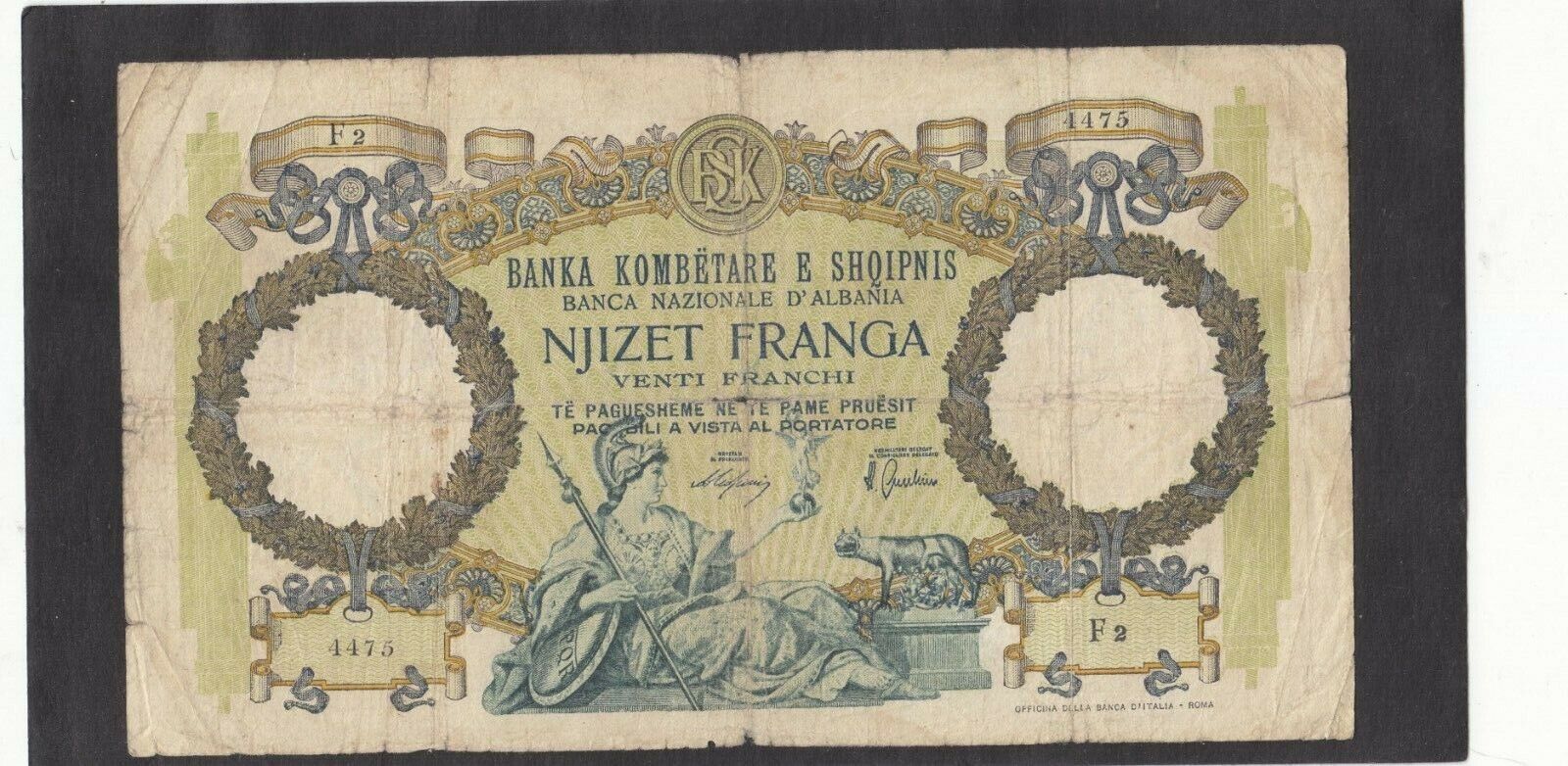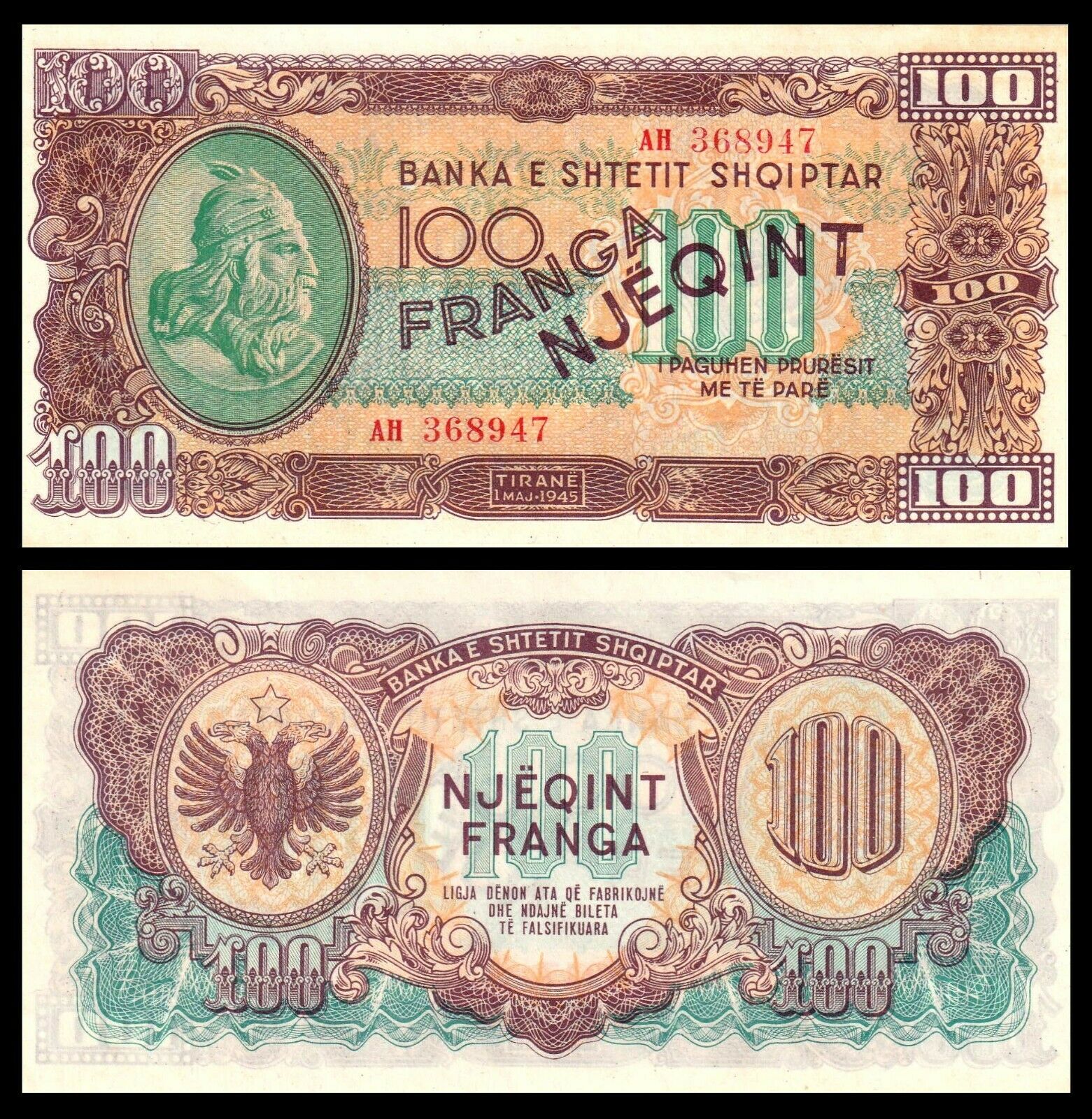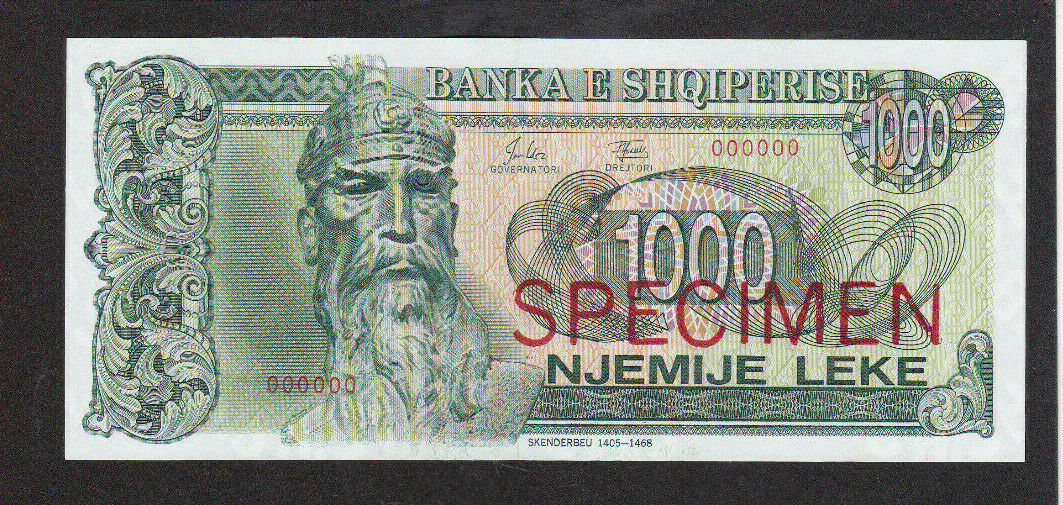-40%
Albania banknote - 10 lek - year 1939 - Italian occupation of Albania - WW2
$ 12.14
- Description
- Size Guide
Description
The lek (Albanian: Leku shqiptar; plural lekë) (sign: L; code: ALL) is the official currency of Albania. It was formerly subdivided into 100 qindarka (singular qindarkë), but qindarka are no longer issued.History
Alexander the Great on the first Albanian 1 leke coin.
The lek was introduced as the first Albanian currency in February 1926.
Before then, Albania was a country without a currency, adhering to a gold standard for the fixation of commercial values. Before the First World War the Ottoman Turkish piastre was in full circulation, but following the military occupation of the country by various continental powers the gold franc (Franc Germinal) was adopted as the monetary unit. In 1923 Italian paper circulated at Shkodër, Durrës, Vlorë, and Gjirokastër, and the Greek drachma at Korçë, the values of which varied according to locality and the prevailing rates of exchange as compared with gold.
Etymology
The leke was named after Alexander the Great, whose name is often shortened to Leka in Albanian. Alexander's portrait appeared on the obverse of the 1 lek coin, while the reverse showed him on his horse.
The name qindarkë comes from the Albanian qind, meaning one hundred. The word is thus similar in formation to centime, cent, etc.
First lek
In 1926, the National Bank of Albania (Banka Kombëtare e Shqipnis) introduced notes in denominations of 1, 5, 20 and 100 franka ari. In 1939, notes were issued denominated as 5 and 20 franga. These were followed in 1944 with notes for 2, 5 and 10 lekë and 100 franga.
In 1945, the People's Bank of Albania (Banka e Shtetit Shqiptar) issued overprints on National Bank notes for 10 lekë, 20 and 100 franga. Regular notes were also issued in 1945 in denominations of 1, 5, 20, 100 and 500 franga. In 1947, the lek was adopted as the main denominations, with notes issued for 10, 50, 100, 500 and 1000 lekë.











